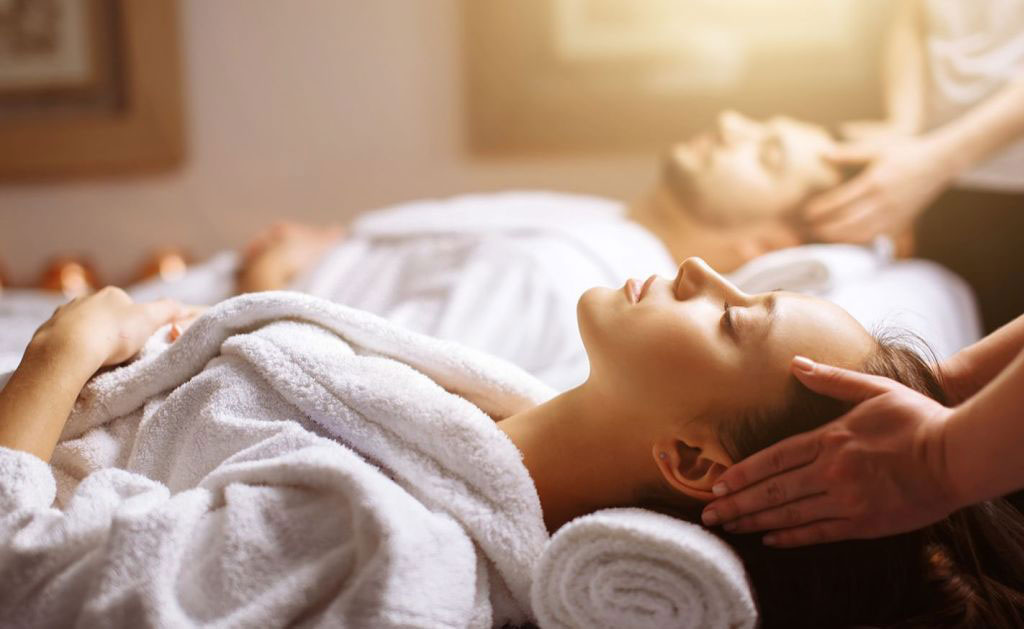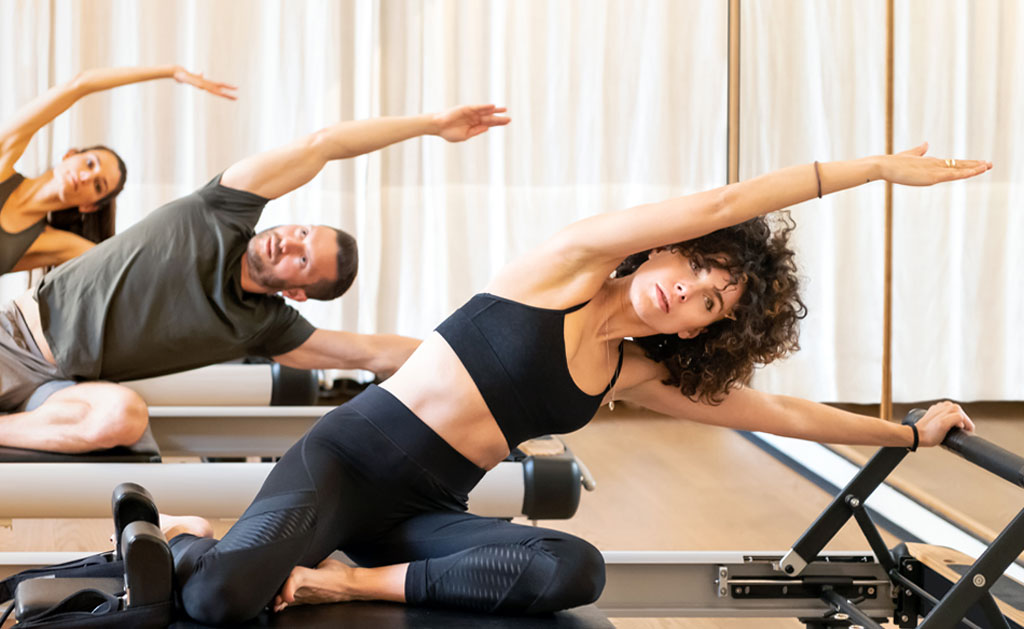The Art of Healing: Understanding Our Style & Philosophy
at Flow Plus Pilates Studio in Highland Park, IL
Pilates is renowned for its remarkable impact on both physical and mental well-being. This holistic practice enhances core strength, promotes optimal posture, improves flexibility, and refines coordination. However, Pilates extends beyond physical fitness, offering a range of therapeutic benefits that include relaxation, stress management, and anxiety reduction.
Whether you’re a complete novice or an experienced practitioner, discovering the ideal Pilates approach tailored to your specific needs is essential for unlocking your true potential. Your objectives, goals, and interests in Pilates are pivotal in determining the most suitable type for you. Each variation of Pilates presents a unique set of advantages, further enriching its health benefits.
In this informative piece, we will delve into the diverse world of Pilates and explore the various types available, uncovering their unique characteristics and distinctions. Our attention will be directed towards classical Pilates, mat Pilates, contemporary Pilates, reformer Pilates, and clinical Pilates, providing you with a comprehensive understanding of each approach.
Classical Pilates
Classical Pilates dates back to the 1920s when Joseph Pilates developed his unique approach. This form of Pilates emphasizes a comprehensive, full-body workout that targets both the physical and mental aspects of fitness. It follows a specific sequence of exercises with smooth transitions, combining mat work and apparatus-based exercises.
Classical Pilates promotes strength, flexibility, and overall well-being by moving the body through various movements.
Mat Pilates
Mat Pilates is a highly accessible form that requires minimal equipment, making it suitable for practicing anywhere. It is often more affordable and convenient for group classes. Beginners in mat Pilates focus on mastering the foundational techniques of Pilates movements. Advanced practitioners can modify exercises to increase the difficulty and utilize their own body weight for resistance.
Mat Pilates offers numerous benefits, including strengthening the core, lower back, and pelvic floor muscles, enhancing flexibility, and promoting mental well-being through mindfulness and relaxation techniques.
Contemporary Pilates
Contemporary Pilates blends elements of Classical Pilates with modern exercise methods and knowledge of biomechanics. This approach incorporates various techniques, adapting to individual needs, goals, and health conditions.
Contemporary Pilates instructors may have different training backgrounds, resulting in varying class structures. The exercises often prioritize a neutral pelvis position, respecting the spine’s natural curves.
This approach allows for more personalized modifications, the use of equipment and props, and a functional approach that benefits rehabilitation, pre-natal, and post-natal clients.
Reformer Pilates
Reformer Pilates utilizes a specialized apparatus called a reformer to enhance the Pilates experience. The reformer comprises a sliding carriage, springs, and adjustable straps, offering resistance and assistance during exercises.
This versatile equipment enables various movements and variations, targeting specific muscle groups while promoting stability, strength, and flexibility.
Reformer Pilates provides a unique and dynamic workout that challenges the body in various positions, helping to improve posture, coordination, and overall physical performance.
Clinical Pilates
Clinical Pilates is a specialized form of Pilates that focuses on rehabilitation and injury prevention. It is commonly offered in collaboration with healthcare professionals, such as physiotherapists or chiropractors.
This type of Pilates is tailored to address specific musculoskeletal conditions and individual needs. The exercises enhance core stability, improve posture, restore mobility, and promote overall functional movement.
Clinical Pilates incorporates a thorough assessment process to ensure a personalized and safe approach to rehabilitation, making it an effective choice for those recovering from injuries or managing chronic pain.
Our Pilates Philosophy
Say Goodbye to Pain: How Corrective Massage Therapy Can Transform Your Life
These principles evolve, influencing our teaching practices and holding significance for clients and ourselves. We celebrate individuality, fostering a supportive environment that encourages self-awareness and exploration of movement.
Our approach blends classical foundations with modern insights, prioritizing mind-body connection, strength, flexibility, and alignment. With this philosophy, we aspire to share the transformative power of Pilates, touching lives and inspiring remarkable journeys.
Our Pilates Guiding Principles
At our Pilates studio, we hold five essential guiding principles that shape our approach to teaching and practicing Pilates. These principles reflect our deep admiration for Joseph Pilates and his legacy and offer a glimpse into our sessions’ essence.
Embrace the Origins:
We greatly respect Joseph Pilates and his unwavering commitment to health and well-being. His revolutionary creation of Contrology, the foundation of modern-day Pilates, showcases his remarkable ingenuity. Inspired by his remarkable legacy, we aim to positively impact every individual we teach, just as he did with his lifelong dedication.
Movement with Joy:
Movement should be enjoyable and diverse. While Pilates requires intelligence and yields profound effects, we strive to make it an engaging experience.
We understand people are likelier to embrace Pilates when it’s not monotonous. We keep our sessions interesting and fun by incorporating various exercises, swift transitions, occasional modifications, and props. Each week presents a new opportunity to explore infinite possibilities, even within the finite number of mat exercises.
Shape through Visualization:
Our approach transcends the complexities of anatomy as we focus on cueing the shapes we create with our bodies. Rather than getting lost in technical jargon, we guide you to visualize the beautiful forms you embody during each movement. Whether it’s making a rainbow in a side bend, a half moon in a rollback, or a fountain in a swan dive, we emphasize the artistry of Pilates.
The Benefits of Corrective Massage Therapy
Exploring the Life-Changing Benefits of Corrective Massage Therapy
Targeted Pain Relief:
Corrective Massage Therapy focuses on identifying and addressing the underlying causes of pain. Targeting specific muscles, trigger points, and areas of tension or inflammation provides effective pain relief. This personalized approach helps alleviate chronic pain conditions such as fibromyalgia, sciatica, migraines, and muscle strains.
Injury Rehabilitation and Prevention:
It aids in the recovery process by reducing scar tissue formation, improving circulation to injured areas, and enhancing the flexibility and strength of affected muscles and connective tissues.
Additionally, regular sessions can help prevent future injuries by addressing muscle imbalances and maintaining optimal physical condition.
Enhanced Body Awareness:
It encourages clients to develop a deeper connection and awareness of their bodies. Therapists often guide posture, body mechanics, and self-care exercises that clients can incorporate into daily routines. This heightened body awareness can help individuals identify and correct postural habits, prevent future injuries, and promote overall well-being.
Improved Athletic Performance:
Corrective Massage benefits athletes and active individuals seeking to optimize their performance. Addressing muscular imbalances, reducing adhesions, and promoting proper alignment, can enhance muscle strength, flexibility, and coordination. This, in turn, improves athletic performance, reduces the risk of injuries, and supports faster recovery.
Releases Tension:
Therapy effectively targets and releases tension in the muscles and soft tissues of the body. This can help alleviate muscle stiffness, knots, and areas of discomfort, providing relief from chronic tension and stress.
Restores Balance in Soft Tissues:
Corrective Massage Therapy addresses imbalances in the body’s soft tissues, including muscles, tendons, ligaments, and fascia. Applying specific techniques helps restore optimal balance and function to these tissues, promoting better overall body alignment and reducing strain.
Alleviates Aches:
Corrective Massage Therapy is particularly effective in alleviating aches and discomfort caused by muscular imbalances, postural issues, or overuse injuries. Targeting the underlying causes of pain provides targeted relief and helps prevent the recurrence of aches and pains.
Schedule Your Appointment Today!
847-780-3846
CALL OR TEXT

